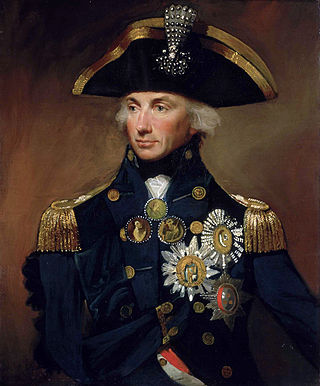
The Missa in angustiis, commonly known as the Nelson Mass, is a Mass setting by the Austrian composer Joseph Haydn. It is one of the six masses written near the end of his life that are seen as a culmination of Haydn's composition of liturgical music.
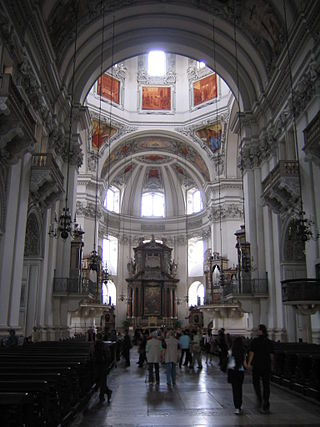
The Krönungsmesse, composed in 1779, is one of the most popular of Wolfgang Amadeus Mozart's 17 extant settings of the Ordinary of the Mass. It can be classified as either a Missa brevis or a Missa solemnis because although it includes all the sections of the Ordinary, it is relatively short.

Missa brevis usually refers to a mass composition that is short because part of the text of the Mass ordinary that is usually set to music in a full mass is left out, or because its execution time is relatively short.

The Mass No. 3 in F minor, WAB 28, is a setting of the mass ordinary for vocal soloists, chorus and orchestra, and organ ad libitum, that Anton Bruckner composed in 1867–1868.
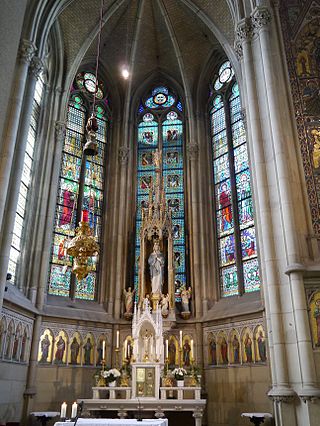
The Mass No. 2 in E minor, WAB 27 is a setting of the mass ordinary for eight-part mixed choir and fifteen wind instruments, that Anton Bruckner composed in 1866.
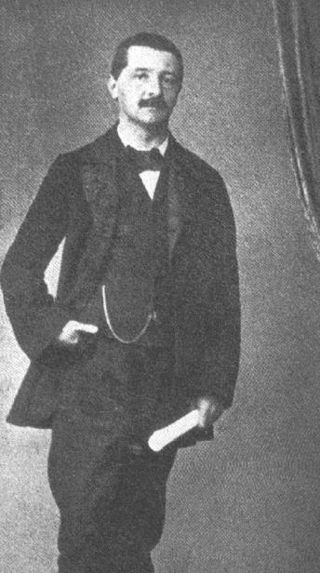
The Requiem in D minor, WAB 39, is a Missa pro defunctis composed by Anton Bruckner in 1849.

The Missa solemnis, WAB 29, is a solemn mass composed by Anton Bruckner in 1854 for the installation of Friedrich Mayer as abbot of St. Florian Monastery on 14 September 1854.

The Magnificat, WAB 24 is a setting of the Magnificat for SATB choir and soloists, orchestra and organ composed by Anton Bruckner in 1852.

The Mass No. 1 in D minor, WAB 26 by Anton Bruckner, is a setting of the Mass ordinary for soloists, mixed choir and orchestra, and organ.

The Missa brevis No. 8 in C major, K. 259, is a mass composed by Wolfgang Amadeus Mozart in 1776. It is scored for SATB soloists, SATB choir, violin I and II, 2 oboes, 2 clarini, 3 trombones colla parte, timpani and basso continuo.

The Kronstorfer Messe, WAB 146, is a missa brevis composed by Anton Bruckner in 1843-1844.

The Messe für den Gründonnerstag, WAB 9, is a missa brevis composed by Anton Bruckner in 1844.

Asperges me, WAB 4, is a sacred motet composed by Anton Bruckner. It is a setting of the Latin Asperges me, the antiphon used for the celebration of Asperges.

Libera me, WAB 21, is the first of two settings of the absoute Libera me, composed by Anton Bruckner in c. 1843.

Tantum ergo, WAB 43, is the second of eight settings of the hymn Tantum ergo composed by Anton Bruckner in c. 1845.

Tantum ergo, WAB 44, is the last of eight settings of the hymn Tantum ergo composed by Anton Bruckner in c. 1854.

Pange lingua, WAB 33, is a sacred motet composed by Anton Bruckner in 1868. It is a setting of the Latin hymn Pange lingua for the celebration of Corpus Christi.

Missa cellensis refers to two masses by Joseph Haydn:
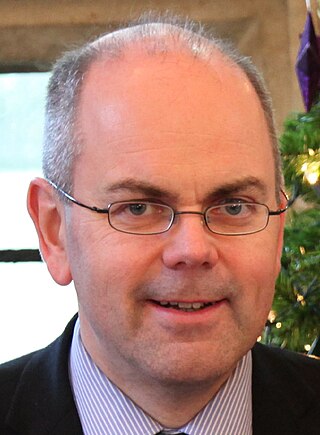
Messe in G is a mass in G major by the English composer Christopher Tambling. He composed it in 2013, scored for mixed choir and organ, optionally also with orchestra. The congregation is meant to participate, singing the theme of the Gloria as a refrain, and the theme of the Sanctus. The mass was first published in 2014.














